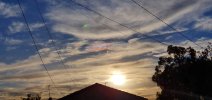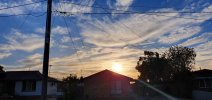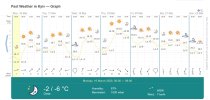In the fall had checked the Old Farmers Almanac - predicting (in BC) sort of an up and down season depending on where one lives.
The reality was that, yes, there was snow (130% of normal in some of the mountains) and some valleys, like at home (Purcell/Rockies) were pretty causal overall.
As for being cold, there was just enough pacific inflow to keep the northern airflow East of the Rockies (except for up North). For instance last year November had a streak of - 25c and February another run for a few weeks of near the same. In December/January another blast that kept East. This year there was perhaps a couple of days near -25 and the rest ranged from +3c to -15c, and instead of burning 3 cords of wood it has not reached the end of 2 cords. March is just here, so the weather will go up and down, yet cool overall it says.
So, it seems the Old Farmers Almanac was pretty accurate overall, even in East Canada which was close in most predicted regions (some areas got much more snow).
This year had a look and for BC it
states:
| Dates | Weather Conditions |
|---|
| Mar 1-13 | Rainy periods south, snow showers north; cold |
|---|
| Mar 14-17 | Showers, cool |
|---|
| Mar 18-22 | Sunny south, snow showers north; cold |
|---|
| Mar 23-31 | Showers, then sunny, cool |
|---|
| March | temperature 2°C (2°C below avg.)
precipitation 100mm (20mm below avg.) |
|---|
and
April 2020 Long Range Weather Forecast for Southern British Columbia
| Dates | Weather Conditions |
|---|
| Apr 1-7 | Sunny, cool |
|---|
| Apr 8-21 | Rainy periods, mild |
|---|
| Apr 22-25 | Sunny, cool |
|---|
| Apr 26-30 | Showers, cool |
|---|
| April | temperature 8°C (avg.)
precipitation 90mm (10mm above avg. east, 30mm below west) |
|---|
with (including the past months, which was not accurate in all areas):
Annual Weather Summary
November 2019 to October 2020
Winter will be colder than normal, with above-normal precipitation and below-normal snowfall. The coldest periods will be in mid-December and early January, from late January into early February, and in mid- and late February, with the snowiest periods in late December, early to mid-January, and early February. April and May will be slightly warmer than normal, with precipitation above normal in the north and below normal in the south. Summer will be hotter than normal, with the hottest periods in late June and mid-July. Precipitation will be above normal. September and October will be warmer than normal, with near-normal precipitation in the east and above-normal precipitation elsewhere.
So, cold and cool for a few months (possibly warm in May) - which could mean wildfires by late July if not for precipitation, yet that is what was called for last year and it did not really materialize in any great way.









